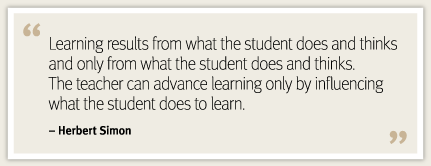(Individual Activity - ProfEd5)

For every Students, every classroom. Real Result
"Khan Academy website is a non-profit site with the mission to provide a "FREE", World class education for anyone, anywhere.
it is also allows you to engage and interact with your target audience in real-time.
"there is a polling tool wherein you can set the questions and your target audience and can give their answer using a mobile phone or any other device connected to the internet"
Instruction/Guide on how to use Khan Academy.
the website consist of 3 category. the learners, teachers and parents. it all consist of personalized help with what you're studying or to learn something completely new.
Signing Up for a Khan Academy account
To sign up for a Khan Academy account, follow these few easy Steps.
Visit Khan Academy's website
On the home page, fill up your category and your birthday.
Signing Up for a Khan Academy account
To sign up for a Khan Academy account, follow these few easy Steps.
Visit Khan Academy's website
On the home page, fill up your category and your birthday.
Once your done. log in your google, facebook or email account to proceed.
Input your grade in school or university
then choose the subjects and criteria you want to learn, enhance and progress.
this website is like menti.com a teacher can also make a work and every students can enter in the provided link or instruction by the teacher.
This website can also give real-time feedback to allow students and teacher see the answers of the students but anonymously.
Khan academy also give all the academic subjects in school for you to enhance or improve your knowledge.
Once your done, you can now start the free educational class. that's it!
all the questions about the chosen subject will be publish on the website. the correct answer and your scores will also be published!
the strategy of this website is for them to expand the knowledge that they need. it will give world class learning experience to any person or any individual in the social media world.
this website also provides an active learning experience that engages all students in rigorous coursework to prepare them for college and work.
it's like making student a student centered, they will be learn and progress in curriculum that was created in the website.
Name - John Mark Bartolome
BSED-4 / CPTE
St. Mary's college of meycauayan
Subject - ProfEd 5
Professor - Mr. Botis
As a future teacher I also want my student to be the centered of the class. I want them to share the focus in the subject instead of listening to me exclusively, I want me and my student to interact equally. Group work is encouraged, and students learn to collaborate and cooperate with one another. I also want to create an environment that should make learning joyful, challenging and engaging by using technology and other advance teaching strategies.
____________________________________________________________________________________
Trivia
Did you know that Khan Academy is a non-profit educational organization and 90% of US Teachers who have used khan academy have found the website effective? Did you also know that Khan Academy was created in 2008 by Salman Khan with the goal of creating a set of online tools that help educate students in social media world for FREE.
Fundings - Khan Academy mostly funded by donation coming from different organization. In 2010 Google Donated $2 Million for creating new courses and translating context into other language. In 2013 Carlos Slim from Carlos Slim Foundation in Mexico, Made a donation for creating Spanish version of videos and website programs. In 2015, AT&T Contributed $2.25 million for mobile versions of the context accessible through apps.
Recognition
- In April 2012, The founder and executive director of Khan Academy, Salman Khan, was listed among the TIME'S 100 Most Influential People for 2012.
- In 2013 Khan Academy was one of the five winners of Heinz Award. "Winner in the area of Human Condition."
- In 2016, Khan Academy won a Shorty Award for Best in Education.
Be Part of Give the gift of life - "Changing education" Start Donating Now! Visit Khan Academy for details.
References:
Please Note that My blog claims no credit for some images posted in this article and I made no money for the use of the photos.
- Credit should be given to Khan Academy
- Credit should be given to Khan Academy
BSED-4 / CPTE
St. Mary's college of meycauayan
Subject - ProfEd 5
Professor - Mr. Botis













